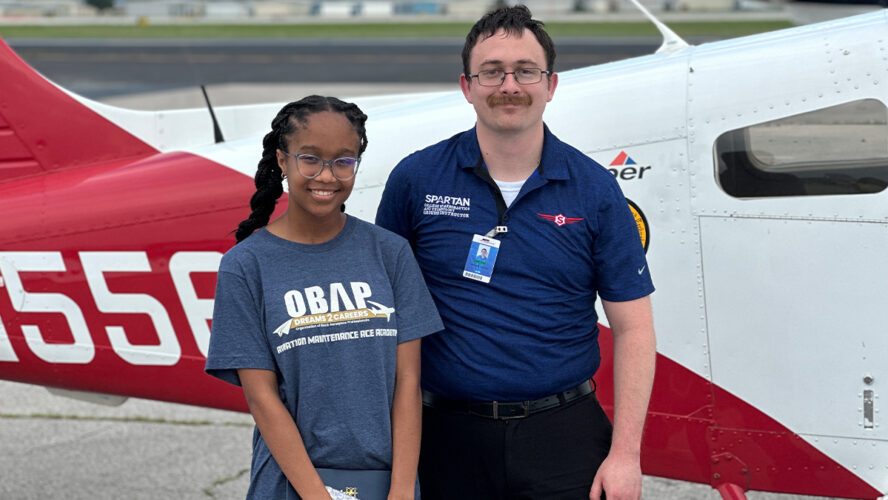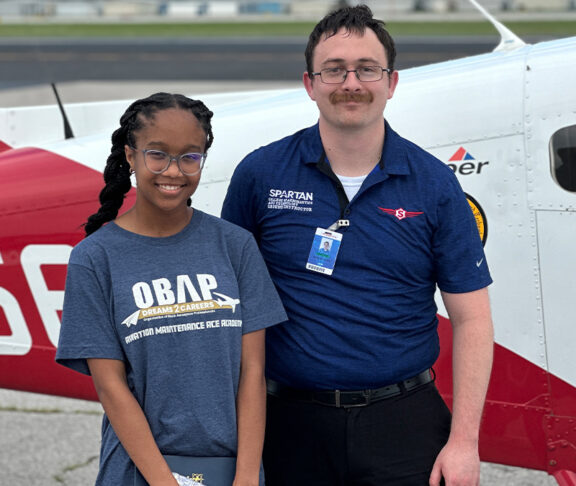The Organization of Black Aerospace Professionals (OBAP) proves diversity drives innovation. By opening doors in aerospace, it inspires young talents like Madison and prepares the next generation to lead, design, and fly into the future.
The future of aerospace depends on who gets the chance to sit in the flight deck, design the technology, and lead the mission. Right now, too many talented people never get that chance. Fewer than 4% of airline pilots in the United States are Black; women of color remain drastically underrepresented across the industry. For a field that thrives on innovation, we are leaving far too much talent on the ground.
That’s why, in 1976, thirteen Black airline pilots came together to form the Organization of Black Aerospace Professionals (OBAP). They knew the industry would be stronger if more doors were open, and they set out to create pathways for the next generation. Nearly five decades later, OBAP has grown into a global nonprofit reaching more than 160,000 students and professionals each year. What started as a small group fighting for access is now a movement shaping the future of the entire industry.
Representation makes a stronger workforce
At OBAP, we believe the solution is clear: When the workforce reflects the communities we serve, the industry is stronger. Innovation improves, creativity expands, and young people can see themselves in roles they might never have imagined.
Take Madison Gardner, for example. When she was in eighth grade, our Aerospace Professionals in Schools program brought a Black female pilot to speak at her school. Inspired by that visit, Madison enrolled in an aviation course her high school offered — a decision that set her on an incredible path.

I’ve had the privilege of supporting and mentoring Madison as she pursued her dreams. She went on to attend several of OBAP’s Aerospace Career Education Academies and later our Solo Flight Academy. Right after high school, she earned her Private Pilot Certificate and is now working toward her undergraduate degree in Aeronautical Science.
Education covering every corner of the industry
That’s why our work is focused on building pathways. Our summer Aerospace Career Education Academies introduce more than 800 students a year to aerospace careers. Our Virtual Explore Aerospace program provides real training for students interested in drones and aircraft maintenance. The Lt. Col. Luke Weathers Jr. Flight Academy takes aspiring aviators from no flight hours to airline-ready in just a few years. And it works. More than 80% of participants in our collegiate programs are now pursuing aerospace careers. The Luke Weathers Flight Academy has already produced dozens of pilots who are flying for major airlines today.
And we’re not just training pilots. Our programs touch every corner of the industry — air traffic control, maintenance, engineering, and leadership. We’re building an ecosystem where diverse professionals can thrive at every level. Last year alone, OBAP reached more than 160,000 students and professionals. That’s not just impact — it’s momentum.
The key to the future
The demand is evident. Over the next 20 years, the industry will need more than 600,000 new pilots, technicians, and crew worldwide. We can’t afford to ignore talent just because it doesn’t fit yesterday’s mold.
Diversity isn’t just a talking point. It’s the key to the future of aerospace. And at OBAP, we’re proud to make sure that future truly takes flight.

